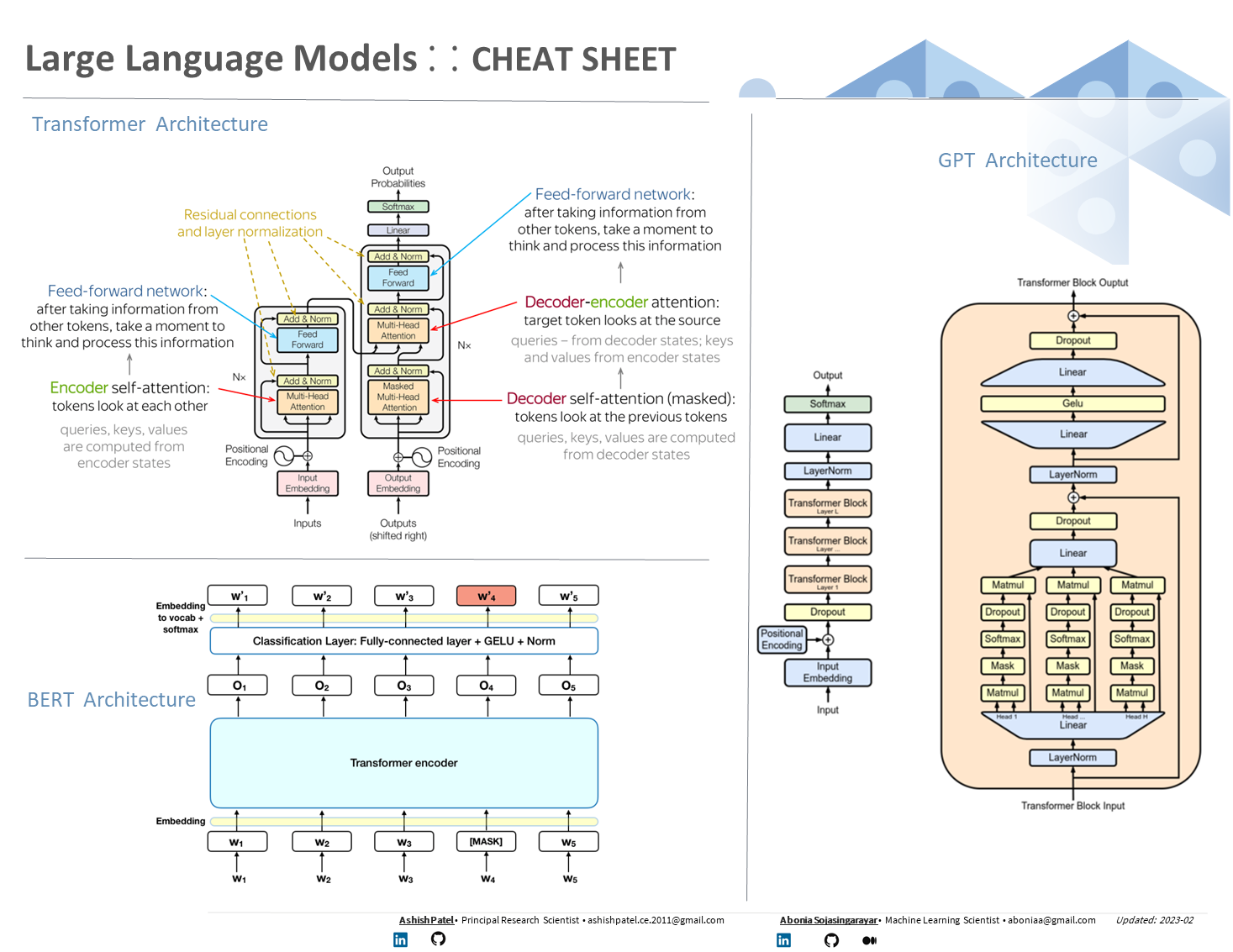The LLM (Language Model) Cheatsheet is a quick reference guide that provides an overview of the key concepts and techniques related to natural language processing (NLP) and language modeling. It is designed to be a helpful tool for both beginners and advanced practitioners in the field of NLP.
| Page 1 | Page 2 |
|---|---|
 |
 |
| Page 3 | |
 |
Large language models are a type of machine learning model that are trained on vast amounts of natural language data. They use deep learning algorithms to learn patterns in the data and can generate human-like text, translate between languages, and perform a wide range of other tasks. Key Concepts
The purpose of the LLM Cheatsheet is to provide a quick and easy-to-use reference guide for NLP practitioners. It covers a wide range of topics related to language modeling and provides a high-level overview of the most essential concepts and techniques in the field. These models are designed to process natural language data and perform various tasks, including text generation, translation, sentiment analysis, and more.
1️⃣ Preprocessing: The input data must be preprocessed before training a language model. This involves cleaning the text, tokenizing it into individual words or subwords, and encoding it in a format that can be fed into the model.
2️⃣ Fine-tuning: Large language models are often trained on large datasets, but they can also be fine-tuned on smaller, domain-specific datasets to improve their performance on specific tasks.
3️⃣ Generation: Language models can generate text by predicting the next word in a sequence, or by sampling from a distribution of possible words.
4️⃣ Translation: Language models can be used for machine translation by encoding text in one language and decoding it into another language.
5️⃣ Sentiment Analysis: Language models can be used for sentiment analysis by predicting the sentiment of a piece of text, such as whether it is positive, negative, or neutral.
There are many tools and libraries available for working with large language models. Some popular options include:
🔰 TensorFlow: An open source machine learning framework that provides tools for building and training large language models.
🔰 PyTorch: Another open source machine learning framework that is popular for natural language processing tasks.
🔰 Hugging Face Transformers: A library that provides pre-trained models for a wide range of natural language processing tasks, as well as tools for fine-tuning and generating text.
🔰 OpenAI GPT-3: A pre-trained language model that is capable of generating human-like text, answering questions, and performing a wide range of other tasks.
Language modeling basics
Types of language models
Preprocessing and tokenization
Word embeddings and vector representations
Transformer, GPT etc architecture
Training and fine-tuning language models
Evaluation metrics for language models
- Each topic is presented in a concise., easy-to-understand, clear explanations and examples.
- Format The LLM Cheatsheet is a single-page PDF document that can be easily printed or saved offline and model evaluation architecture training is designed to be visually appealing and easy to navigate, with a clear consistent layout
Quick reference guide: Use it as a quick reference when working on NLP projects or researching language modeling techniques.
- 🏫 Study aid: Use it as a study aid to help you learn and remember key concepts and techniques in NLP and language modeling.
- 🧑🏫 Teaching tool: Use it as a teaching tool to introduce students to the basics of language modeling and NLP.
- The LLM Cheatsheet is a valuable resource for anyone in natural language processing. It provides a clear and concise overview of the essential concepts and techniques related to language modeling. It can be used in various ways to support learning and research in NLP.
- Large language models are a powerful tool for working with natural language data. By understanding key concepts and using the right tools and libraries, you can build and fine-tune models that can perform various tasks. This cheat sheet provides a starting point for working with these models and exploring their capabilities.
Citation: If you found this useful for your academic work, please consider citing our work, in text:
Abonia S., Ashish P., "Large Languge model(LLM) CheatSheet", Medium-Github, 2023.
BibTeX citation:
@article{2023illustrating,
author = {Abonia, Ashish},
title = {Large Languge model(LLM) CheatSheet},
journal = {Medium-Github},
year = {2023},
note = {https://www.linkedin.com/in/aboniasojasingarayar/, https://www.linkedin.com/in/ashishpatel2604/},
}
Thanks for reading...🙏🙏🙏